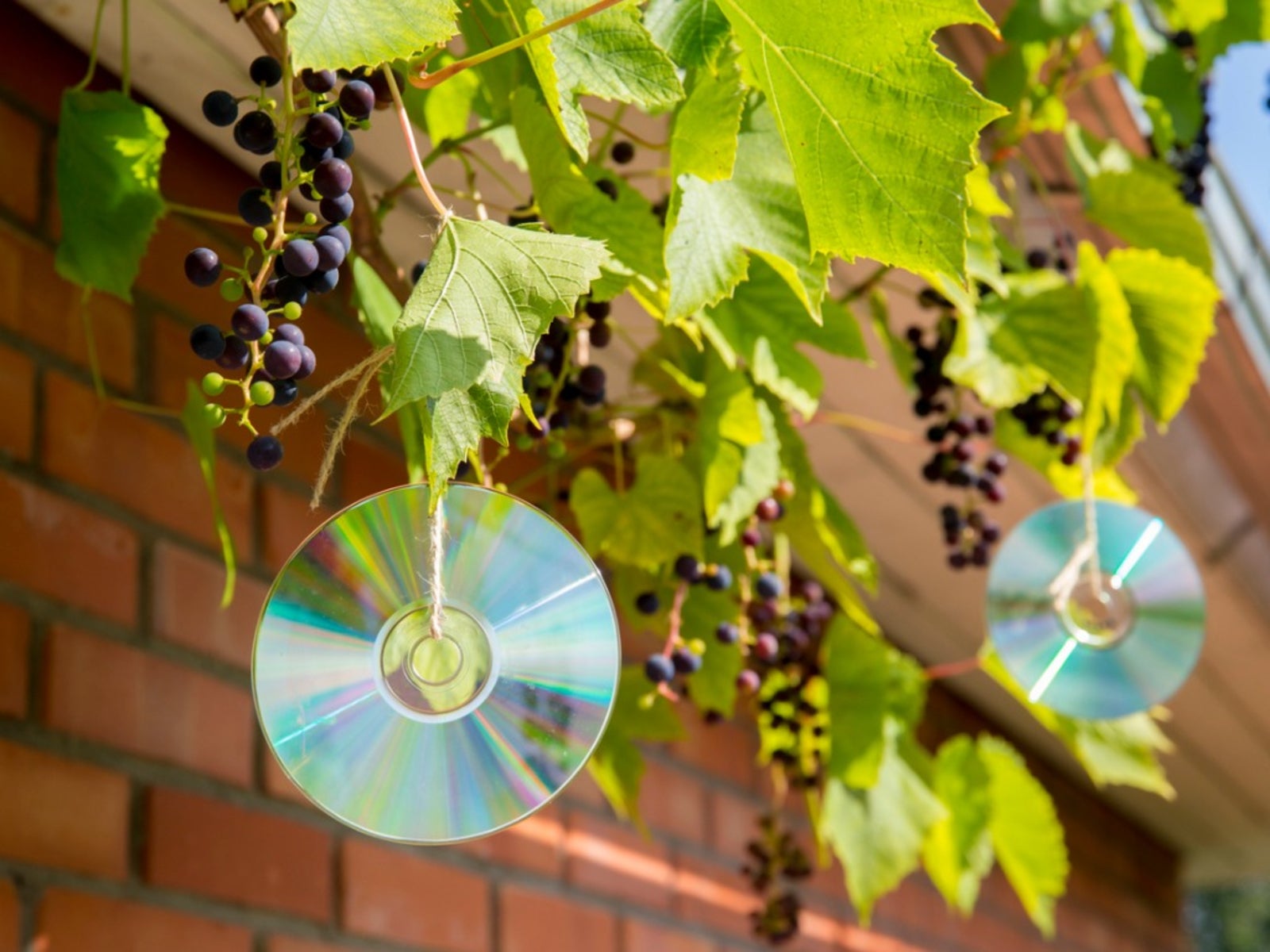Natural Bird Repellents: Controlling Birds In The Garden


Besides just growing plants, many gardeners like to encourage insects and birds to wander into the garden. Birds can certainly be beneficial, picking off caterpillars and other annoying pests, and consuming messy fruits, but some bird species are downright annoying or damaging. Do you know how to get rid of birds that are causing problems around your home and in your landscape? Read on for some ideas.
Types of Bird Damage
Besides damaging or consuming tender, ripening fruits from trees and beds, birds can spread disease and pests like mites, lice or fleas. Birds vector a surprisingly large number of diseases, including West Nile virus and Salmonella, which are serious hazards to humans. Droppings may stain cement, damage vehicles or create slip and fall hazards - and let's face it, no one wants to fall in bird poo. Even if the birds in your yard aren't disease-riddled poop machines, troublemakers like starlings, pigeons or English sparrows, often injure or kill more harmless native birds like bluebirds, purple martins and woodpeckers. These bully birds tend to harass smaller birds at feeders, turning your garden into a war zone.
Controlling Birds in the Garden
Bird pest control is far from simple and there are few effective natural bird repellents; most experts recommend a variety of scare tactics designed to harass the problem birds into seeking shelter elsewhere. When using these scare tactics, remember that birds are smart and will adapt quickly to a single scary stimulant, so you'll need to rotate through several for best effect. Common scare tactics include audio recordings of the bird species in distress, pyrotechnics and predator decoys. Along with employing scare tactics, you'll need to block any vent openings or holes with hardware cloth to prevent the unwanted birds from hiding. Destroy any nests that you're certain belong to troublesome birds; check trees, bushes and under eaves for hidden nests. Sticky barriers may also work to repel birds that are only a bother in a limited area, but these must be changed regularly and will not discriminate between species. You can use bird netting to cover plants that troublesome birds find attractive can also be very helpful. If you decide to feed native birds, choose feeders without perches, and feed only black oil sunflower, niger or safflower seeds that smaller birds prefer. Where kestrels or hawks are active, you can install a nest box lined with coarse wood shavings and fitted with a perch away from obstructions and regular activity to encourage them to nest in your yard. These may take a couple of years to attract, but will keep many offensive birds under control once established.
Gardening tips, videos, info and more delivered right to your inbox!
Sign up for the Gardening Know How newsletter today and receive a free copy of our e-book "How to Grow Delicious Tomatoes".

Kristi Waterworth was a regular contributor to Gardening Know How for many years, answering countless queries on plant pests and diseases.
-
 12 Lush Alternatives To A Lawn For Sustainable Spaces
12 Lush Alternatives To A Lawn For Sustainable SpacesAlternatives to a lawn are beautiful and also beneficial to your local ecosystem and its pollinators. Explore our top picks for plants to replace grass.
By Tonya Barnett
-
 Types Of Tomatoes Explained: Explore The Many Wonderful Shapes, Colors, Flavors, & Best Uses
Types Of Tomatoes Explained: Explore The Many Wonderful Shapes, Colors, Flavors, & Best UsesThe world of tomato varieties is vast and fascinating. Learn about the key types to grow in your garden, tailored to your preferences and space.
By Amy Grant